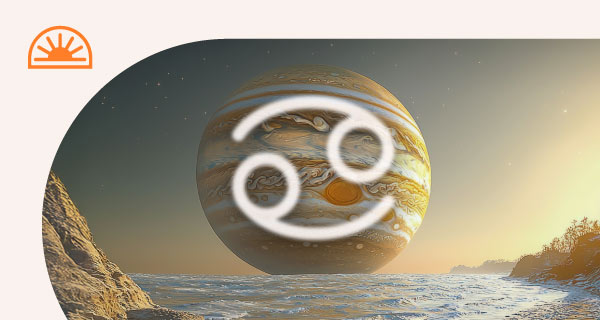Non-Zodiac Constellations Have Deep Roots
The stars are a common — and ancient — object of fascination. In fact, most of the constellations that we observe today have been around in their current form since antiquity. It was Ptolemy, the ancient Greek astronomer, who is credited with first naming these images in the sky and tying them to Greek mythology. Indeed, of the 88 constellations that are recognized today, 48 of them can be attributed to Ptolemy.
However, many of the constellations we see and use today date back even further, to ancient Babylonia and Sumer. The Great Twins (Gemini), the Lion of Leo, and the Sea Goat of Capricorn have all been around for many millennia. In truth, many modern constellations — including some non-zodiac constellations — have their roots in the earliest human civilizations, from the very cradle of humanity. This week, let’s talk about some of the non-zodiac constellations and discuss how they can help us understand and explore the world.
Saturday, June 4
“Canis Major, the Great Dog, contains the brightest star in the sky — the North Star, also known as Sirius. As such, this constellation serves to guide those who look to it.”
This cosmic arrangement contains the North Star, which has always been a beacon of hope for people in the Northern Hemisphere. This star is used for seeking and finding your way. You can think of this constellation when you’re feeling lost and need a way to anchor yourself as you move forward.
Sunday, June 5
“Cygnus, the Swan, appears in the Northern Hemisphere during late summer and autumn, recognizable by the Northern Cross contained within.”
Cygnus is often said to be Orpheus, the mortal whose music was so beautiful that even the gods revered him. The story of Orpheus is a tragic one, but he ultimately received the greatest gift that one could be given in ancient Greece: he was moved to the stars and immortalized there in the form of the swan. Swans represent both beauty and strength, so look to this constellation when attempting to embody those qualities.
Monday, June 6
“Lyra, the Harp, is bright in the summertime, showing us the instrument gifted to the musician Orpheus by the god Apollo.”
Orpheus would be lost without his beloved harp, so Lyra, the Harp, lies next to him in the sky. Lyra is a constellation associated with music and creativity. It encourages us to continue creating. Furthermore, it is a reminder that the music we make is immortal and will ultimately outlast us.
Tuesday, June 7
“Cassiopeia, the Queen, was banished to the stars to hang upside down for eternity.”
Cassiopeia hangs in the stars as a reminder of her hubris. She was banished for her vanity after she bragged unendingly about her own beauty, even going so far as to call herself more beautiful than the gods. This could not stand, of course, and so the gods punished her. Today, we can take this as a reminder not to be self-centered and not to invent or initiate a competition where there isn’t one.
Wednesday, June 8
“Pegasus, the Flying Horse, is one of the most recognizable symbols of ancient Greek mythology. He rides across the night sky.”
Pegasus is a flying horse, and in ancient times he represented impossibility, majesty, escape, transformation, and ascension. He was the pure white steed that heroes rode into battle, and he was the protector of Perseus, passionate, beautiful, and brave. The constellation reminds us that this myth contains much that we can strive to emulate today and every day.
Thursday, June 9
“Ursa Major, the Great Bear, is also known as the Big Dipper. It’s one of the easiest constellations to find in the night sky in the Northern Hemisphere.”
The Great Bear is one of the oldest known constellations, and its origin is said to date back more than 13,000 years to the Great Hunt, a mythological event where gods, fae, and other mythological creatures take to the sky and chase a giant animal through the stars. Today, it’s a symbol of the north and one of the boldest images in the sky, embodying power, strength, and authority.
Friday, June 10
“Orion the Hunter is a constellation seen across the world due to its proximity to the equator. The great hunter of antiquity is one of the most iconic constellations in the world.”
Orion the Hunter is even older than Ursa Major. The first records of this constellation date back over 30,000 years, to an image of the stars carved on an ivory mammoth tusk. It has been mentioned in the Bible, and was known in ancient Egypt, Sumer, and Greece. Orion is a capable hunter — strong, sleek, and adventurous — and the constellation symbolizes self-sufficiency.
Astrology plays an important role in your day-to-day life. The planets are responsible for your moods, experiences and more, which is why you should get a psychic astrology reading. Our astrology psychics can calculate your natal chart and tell you about the important dates in your life (past, present, and future) that will massively impact you. Learn more about our psychics from real testimonials and read through our Astrology & Numerology Blog. Want to read more about your personal birth chart first? Get a free birth chart report today! Find an astrology psychic or learn more about astrology readings.
About California Psychics:
California Psychics is the most trusted source of psychic readings. We have delivered over 11 million discreet and confidential psychic readings by phone since 1995. More than a prediction, we are your guide for life’s journey. Learn more about how psychic readings work and explore the California Psychics blog. With over 500 psychics online to choose from with real customer reviews, you’re sure to find the best psychics for you. Call one of our trusted and accurate psychics today! Confidential and secure, real psychics, accurate predictions, 100% guaranteed.




